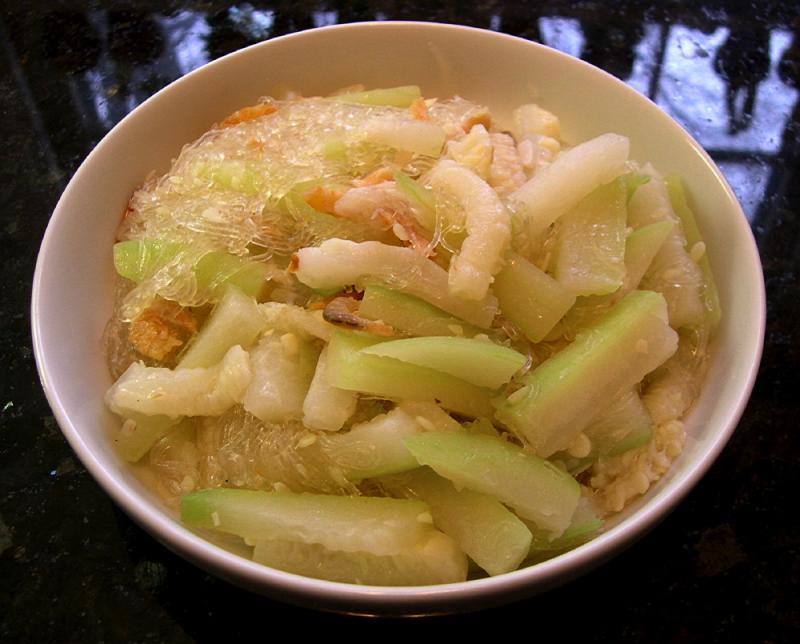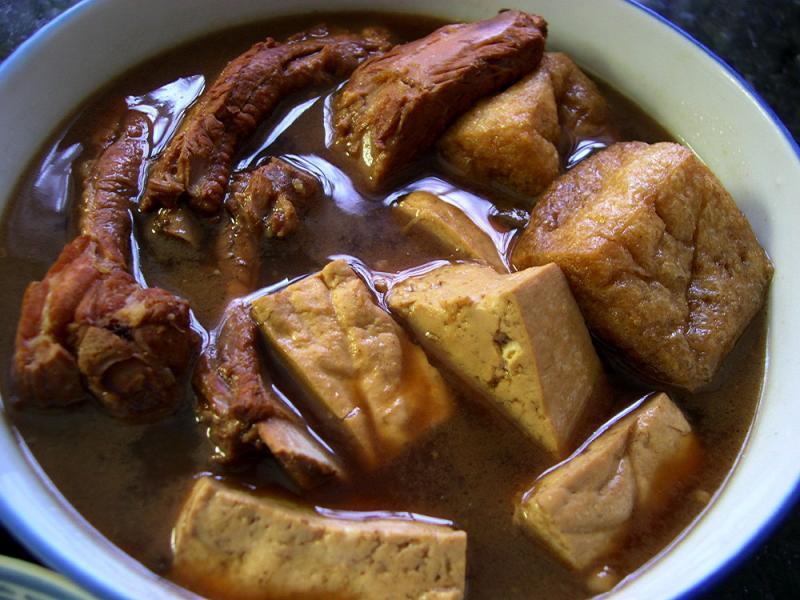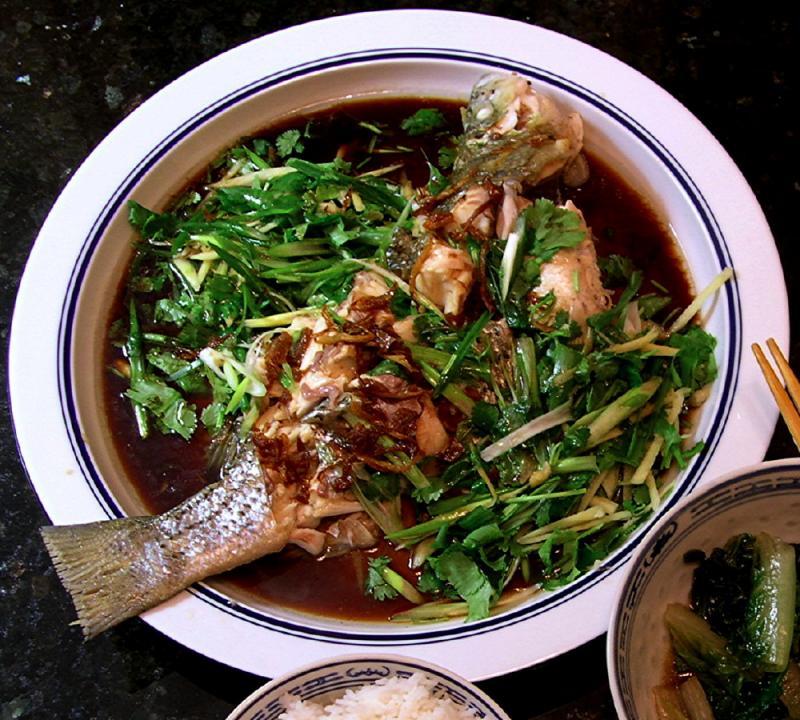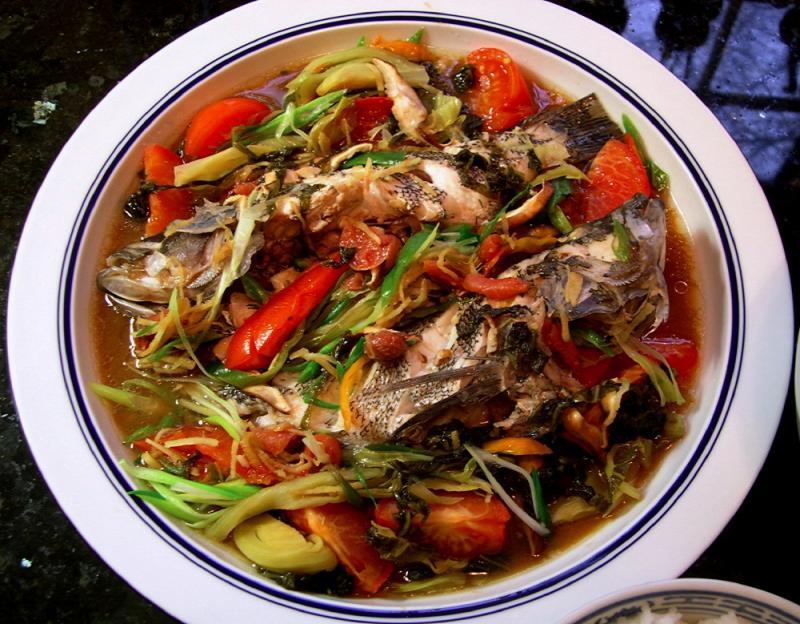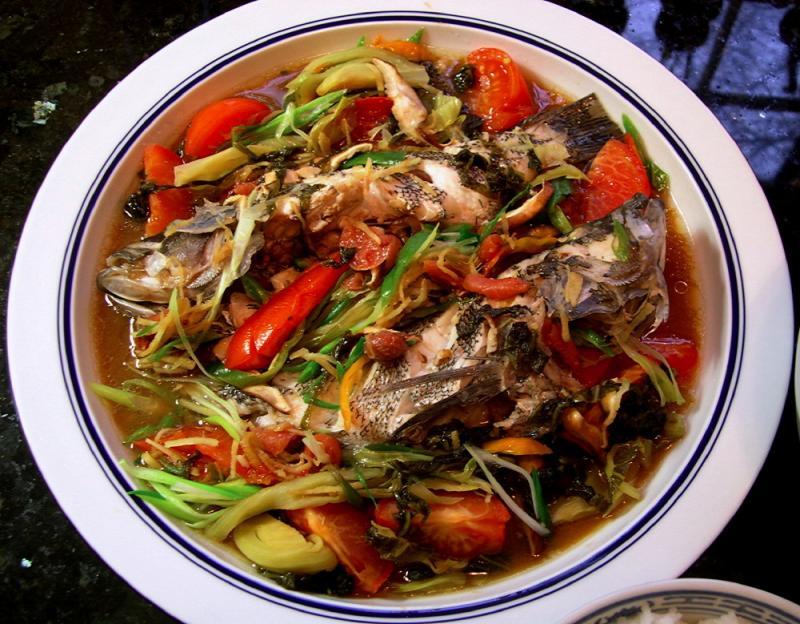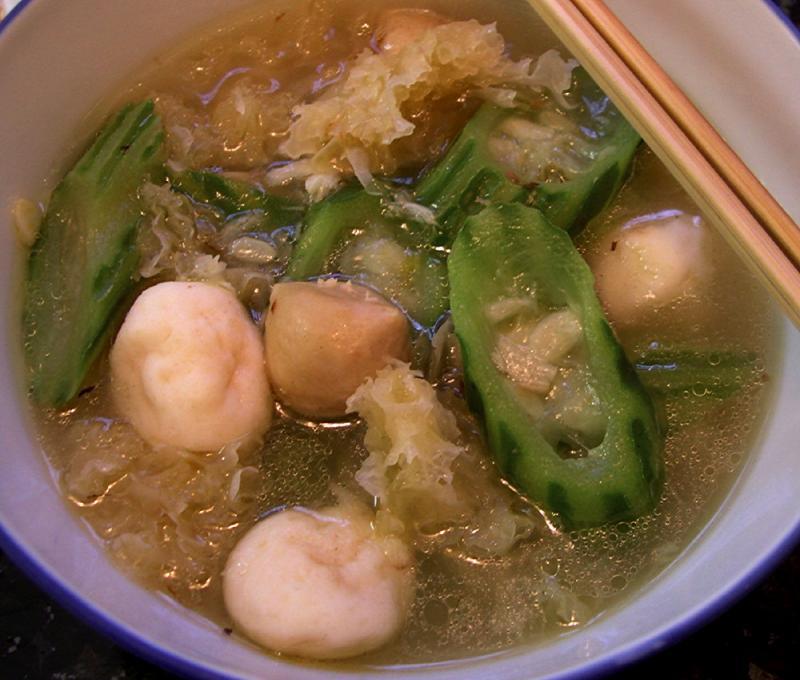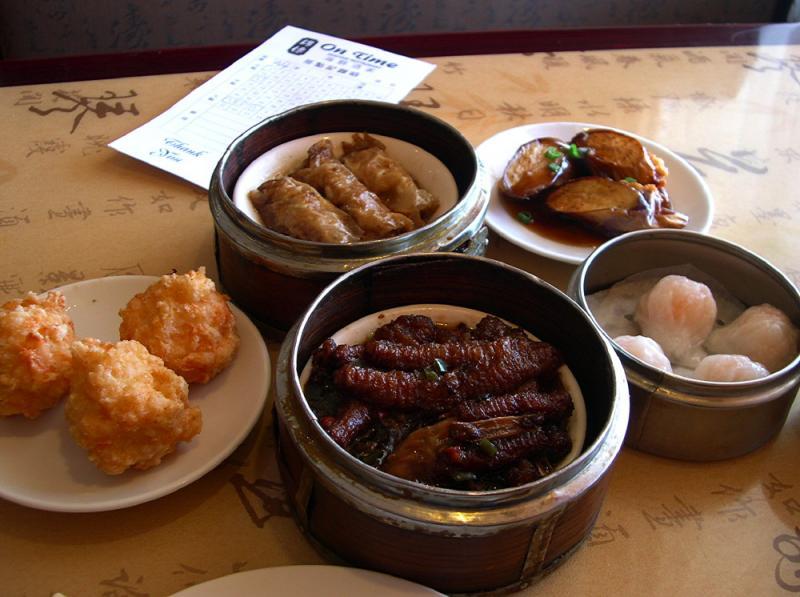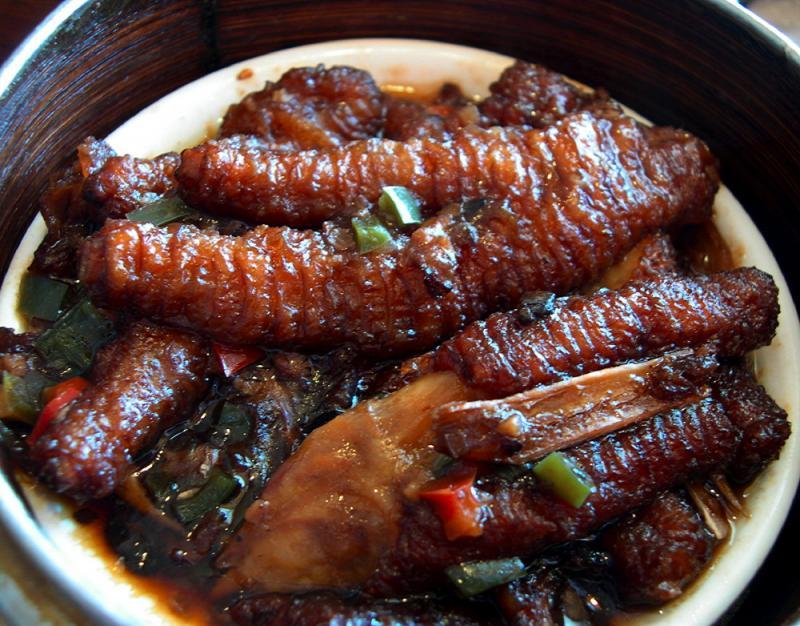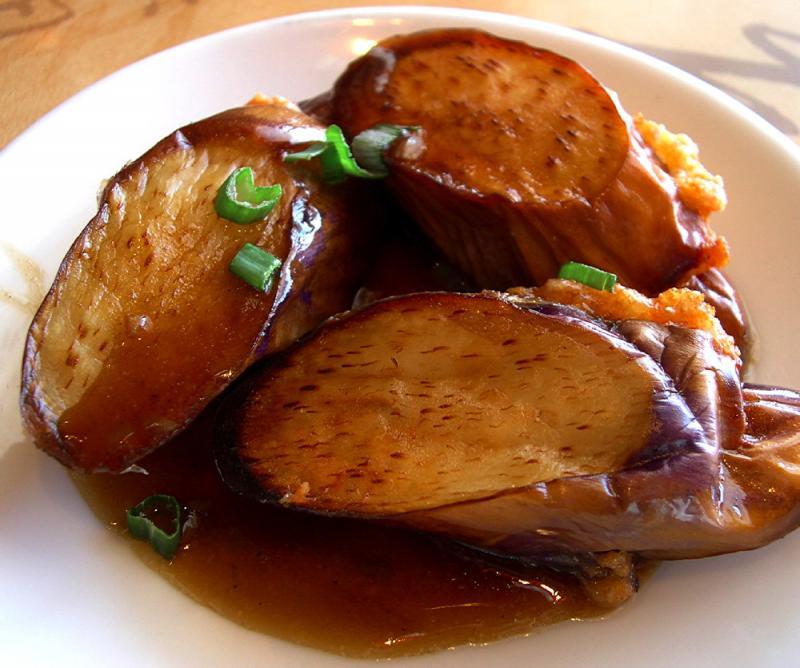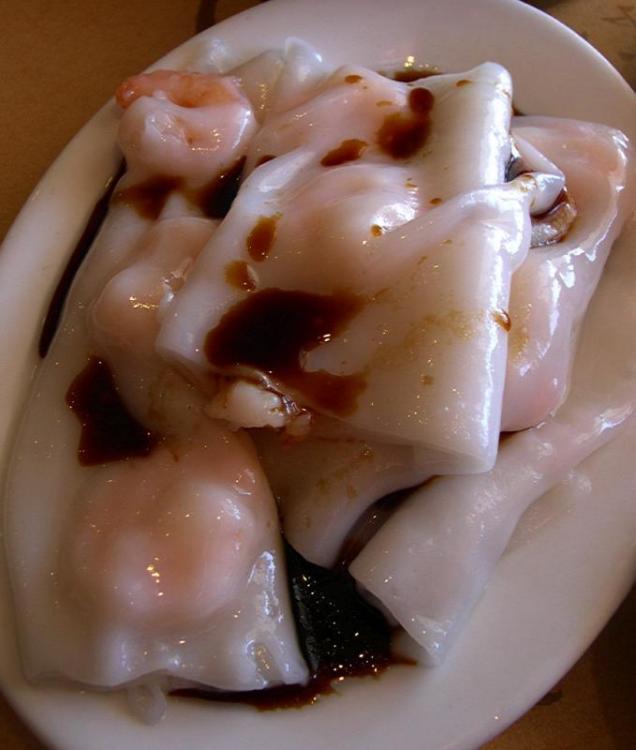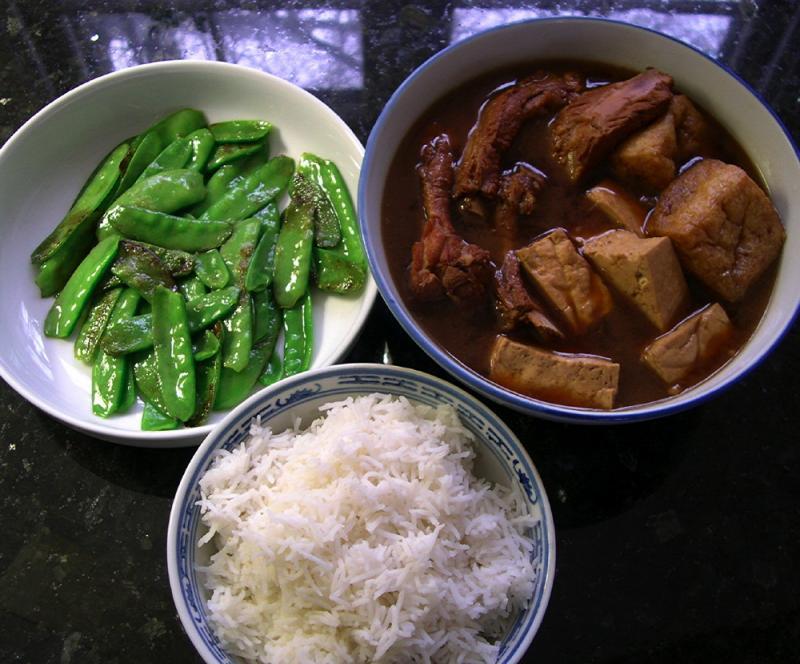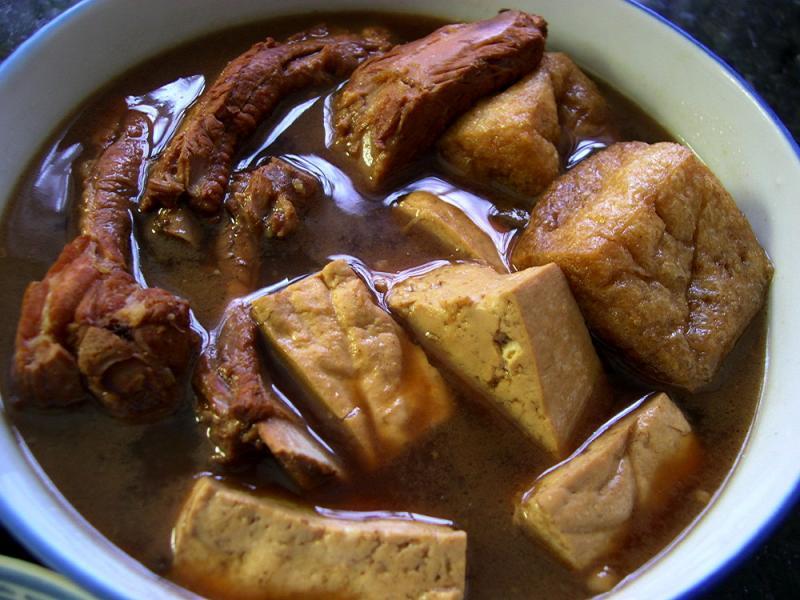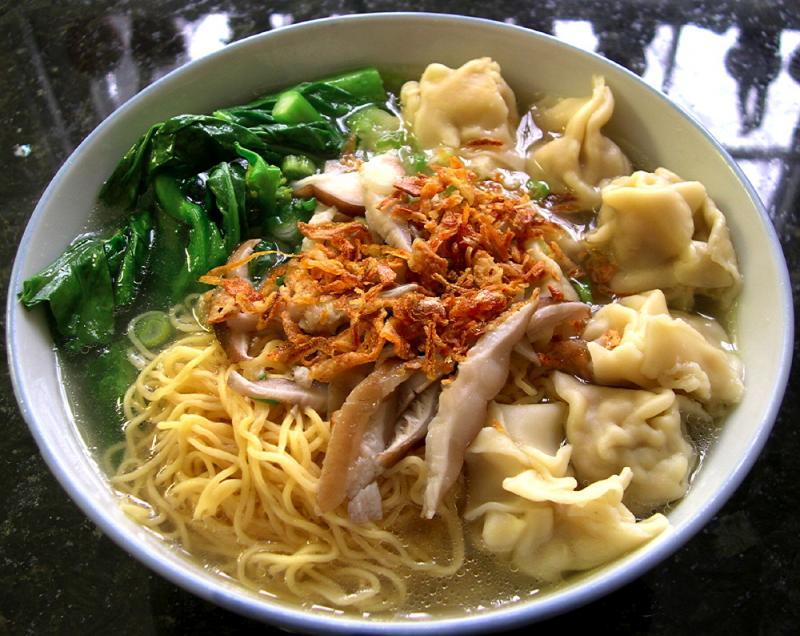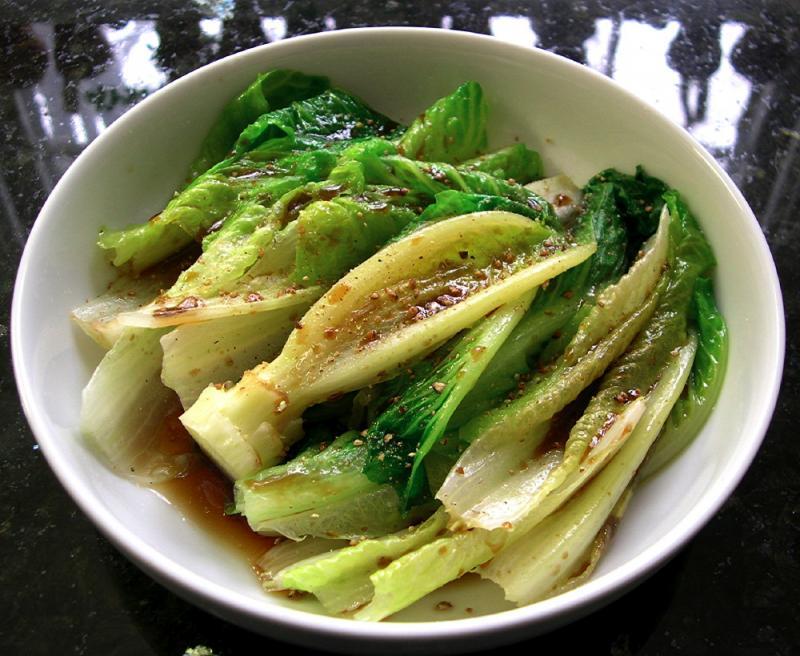-
Posts
3,810 -
Joined
-
Last visited
Content Type
Profiles
Forums
Store
Help Articles
Everything posted by huiray
-
Nice!! Nothing wrong with a "simple roast chicken". Waxman et al and many other chefs have said that a "simple roast chicken" is not the easiest thing to achieve. :-)
-
True, but I do feel that John Tesar did get the shaft this episode. Yes, he was somewhat of a dick this episode as shown and/or as edited but I did feel he got a raw deal. The "risotto curse" strikes again, at the least. (I do agree that his complaint of non-flat pots, where the burners they had were gas rather than electric, were not persuasive - but OTOH if all he had were "lumpy-bottomed" pots [the other cheftestants having gotten the better ones] then I would go along to an extent with his complaint...) Barely edible/"food-poisoning category" scallops? Wow, I would have pushed that to the utter bottom. Tesar, in his "talking heads", did not do himself too many favors - but in the scenes as broadcast of his actual working with others he certainly seemed like someone who was trying to get on with everyone else. Joshua Valentine - now *that* is someone of the first rank of DICKINESS. What a piece of sh*t that one is. As for Josie - why is she even still there? (Ditto, why is Valentine still there)
-
"Tai Yee Ma Kar Lui" [大姨媽嫁女] (First [maternal] aunt marries off daughter). Yum. "Chit Kua" [a kind of Chinese gourd] sliced into 'sticks', cooked w/ sautéed garlic & softened dried prawns ["har mai'] and glass noodles ["fun see"; 粉絲][Hokkien: "tang hoon"]. Seasoned to taste. There is a thread on this dish on this forum, where it is described simply as "Hairy melon stir-fried with mung bean threads". The name "Tai Yee Ma Kar Lui" [大姨媽嫁女] is what I knew this dish as, growing up in SE Asia. Some folks might do this dish with fresh shrimp/prawns. That's fine, but for me , personally, that changes the character and taste of the dish and it no longer is "大姨媽嫁女" when fresh shrimp is used.
-
I guess this little piggy went to market and never made it home.
-
Nice dishes, Jason Perlow. Thanks, Patrickamory. To add on to jsager01's post, I suspect "Superior Soy Sauce" is sometimes used as a marketing tool; although in a general sense it seems to often simply mean roughly the same as a high-grade soy sauce, also suitable for using directly as a table condiment especially the light ones. I may be wrong but I’ve usually thought of “superior light soy sauce” as basically the same as what I think of as “Sang Chow” (生抽) (Google translation). Perhaps others more knowledgeable on soy sauces will add their input. A couple of other webpages/articles that may be of interest: http://www.flavorand...icle.php?ID=288 http://www.justhungr...l-you-need-know (more stuff and details about Japanese soy sauces) The Chinese wikipedia article (take it for what it’s worth) on soy sauce (醬油) (Google translation) also gives some info on the specifications for types of soy sauce. FWIW I think the English wikipedia article isn't half bad and does seem to have some overlap (including the wording) with the article linked to by jsager01 as he mentions. Perhaps the author of that article was also a contributing editor to the wiki article?
-
Tried "Lap Cheong" of various kinds? A classic add-in.
-
The remainder of the Bak Kut Teh from a few days back, with extra fried tofu puffs (油豆腐) added in - a different one this time. White steamed rice.
-
-
A couple of steamed fish dishes: Cantonese-style steamed big mouth bass: Full post: http://egullet.org/p1901465 Teochew-style steamed black sea bass: Full post: http://egullet.org/p1903429 (also angled luffa & snow fungus soup)
-
Late lunch on Monday: • Teochew-style** steamed black sea bass (2 small fishes). • Chinese okra (or 'Angled luffa'; Luffa acutangula) soup - with fish balls, pork balls and snow fungus (Tremella fuciformis) in chicken stock. • Steamed Thai Hom Mali rice. ** using tomatoes, sour plums, sliced hot long chillies, sliced pickled sour mustard ("Harm Choy" or "Hum Choy"), sliced scallions & ginger, a little light soy sauce, a little oil. If one is interested, compare this with the Cantonese-style steamed big mouth bass I posted about here: http://egullet.org/p1901465
-
Regarding soaking the rice before steaming in the basket Kerry Teal shows: I imagine it would vary with the type of rice used? Here's a video of a street vendor in Kanchanaburi, Thailand, using that basket. http://importfood.co.../025-Dish8.html The narrator states that the glutinous rice being steamed had been soaking for several hours. Perhaps overnight soaking might be at the far end of what is recommended but most recipes for steaming glutinous rice or sticky rice does seem to call for soaking for a few hours at least. Some say to soak for no more than x hours (less than overnight). Here's an alternative to the basket - use a splatter guard! http://shesimmers.co...-a-steamer.html
-
bloomingmom, I don't know of an "Hour Time" restaurant in Indianapolis. There is an "On Time" Chinese restaurant (no website) in Indianapolis, where I had dim sum today, off Lafayette Rd on Commercial Drive just N of Saraga International Market in that same "strip mall-like area". Is that what you meant? If so, the dim sum is decent/OK, not fantastic, but is about as good as what one can get in Indianapolis. This place used to be called "Great Garden" some years back; it was shuttered briefly, then reopened as "On Time Seafood Restaurant" which morphed into "On Time Chinese Restaurant". BTW Googlemaps has it as "On Time Seafood" and places it S/SW of Saraga both of which is wrong. There *is* an American cuisine restaurant in Lafayette, IN called "Hour Time Restaurant" - might you be confusing this one with "On Time Restaurant"?
-

Your most disliked trend in the food industry.
huiray replied to a topic in Food Traditions & Culture
This is all absolutely fair and reasonable, BUT. There are people who find the idea of going amok with modern technology really relaxing, and there are those who are very detail oriented, who find fine-grained control soothing. We love the little gadgets that give us precise, accurate information! Being able to fine-tune a recipe feels really great! (snip) Well, I've been a research chemist for several decades. I've even had occasion to do battle with the Patent Offices on several continents (via the corporate lawyers and agents) numerous times. Yet I have little, if any, interest in Modernist Cuisine and especially find those who use it excessively (both chefs and amateurs) to be...excessive. I guess that puts me in the "Jason Perlow camp". :-) There *are* some who use it sparingly and well. I would include the Voltaggio brothers amongst them. Grant Achatz, I find excessive and off-putting. -
Yesterday's batch of "Bak Kut Teh" with baby back ribs, various herbal roots & spices, soy & oyster sauces, tofu puffs and firm tofu slices: http://egullet.org/p1903156 Moderator's Note: This topic continues in The Soup Topic (2013–)
-
Dim sum lunch at On Time Restaurant. “Phoenix claws” a.k.a. chicken feet w/ homemade sauce (醬汁鳳爪) Fried shrimp balls (炸蝦丸) Stuffed bean curd skin w/ oyster sauce (蠔油鮮竹卷) Stuffed eggplant/aubergine (百花釀茄子) Shrimp dumplings, “Har Gow” (蝦餃) Shrimp rice crepe (鮮蝦腸粉) Beef tripe w/ ginger & (green) onion (薑蔥牛柏葉) Po Lei tea (Pu-erh).
-
Bak Kut Teh. Sautéed snow peas (very hot pan, some "wok hei"). Steamed white rice. For the Bak Kut Teh today I used baby back ribs (pork); generous amount of shaved "Tong Kwai" (當歸; Yale: dong1 gwai1; "Radix Angelica Sinensis"; Angelica sinensis) and "Yook Chook" (玉竹; Yale: yuk6 juk1; Polygonatum odoratum (Mill.) Druce); a handful of "Hung Chou" (紅棗; Yale: hung4 jou2; Chinese red dates; Ziziphus ziziphus) and a few large pieces of "Chan Pei" (陳皮; Yale: chan4 pei4; dried tangerine peel); two-and-a-half whole heads of garlic; later on, several whole star anise plus 4 sticks of cassia bark plus a small handful of whole cloves; then light soy sauce, thick dark soy sauce, and oyster sauce. Then, towards the end, slices of firm tofu and tofu puffs; and the garlic heads are squished with a wooden ladle to release the soft garlic "meat" into the soup. Simmered for about 1 1/2 hours in total.
-
patrickamory (& SobaAddict), thanks for the explanation about Steve Sando and his "rule".
-
SobaAddict, nice meal at Noodletown. :-) Yum. Yet more dinners, too, posted from everyone to linger over... I confess I've never had the urge to make my own bacon. For that matter, I've never been too keen on bacon per se anyway. (My personal preferences - please refrain from bashing me)
-
Are Chinese "Red dates" (Jujubes; Ziziphus ziziphus) included in this topic? http://en.wikipedia.org/wiki/Jujube (edited)
-
Heidi, This "hot oiled water blanching" that I talk about is just wilting and cooking lightly any veggie one desires in a pot of boiling water to which has been added a bit of oil, usually veggie oil. One brings a pot of water to the boil, adds some oil (not too much, the oil will coat the veggies, but the oil also provides a "smooth" textural component to the blanched veggies - omitting the oil affects the "mouth feel" of the blanched veggies), then one adds in washed & trimmed veggies and depending on what it is and how cooked you want the veggies to be one waits for the water to return to boiling and/or fishes them out before it does so, or let it come back to a boil and let it boil for however long is needed or desired. It depends on what the veggie is and/or how cooked one wishes it to be and/or how much crunchiness one wishes to retain. I don't usually use olive oil for this process. It "colors" the flavor and the resulting blanched veggie is oddly "greasy" and cloying when olive oil is used. The idea is to make the veggie "not raw" and in the process give it this slightly altered taste profile ("semi-cooked") but still retain almost all its previous character. It's one of the most common techniques in Chinese (Cantonese?) cooking. I would consider that even stir-fries of "meat + veggie" in effect does this, albeit the veggie may be "parboiled" or "blanched" in water in the wok over that 35,000 BTU flame without oil, to be fished out and recombined with the rest of the dish later on when there is sauce and oil in the whole. I do it with almost any leafy veggie I want, both E/SE Asian or Western, within a kind of "taste/texture" profile. Typical would be Gai Lan, Tong Ho (edible chrysanthemum), Spinach of various sorts**, lettuce of almost any kind†† (including the Romaine I described in the previous post) both Oriental and Western, Choy Sum (Yu Choy), etc. However, I would not do this for things like Seng Choy (edible amaranth) or Kai Choy (Chinese "Mustard Greens", Brassica juncea) which don't turn out well with this technique. With many of the leafy veggies the volume is, of course, greatly reduced after blanching and I'm sure you can imagine which ones those might be. It also works well with broccoli or cauliflower - as an alternative to steaming them, which would be a well-known Western way with those "harder" veggies. It also works well with stuff like kale - but not really so much collard greens. Western mustard greens work, if you limit the hot water exposure. In all cases the veggie is blanched to the desired "done-ness", drained (colander) or just fished out; then either eaten as-is (works with flavorful veggies) or dressed with some sauce - such as (Chinese) oyster sauce, or Ponzu sauce, or just soy sauce, even Worcestershire sauce - plus ground pepper or not as one wishes. Some tangy sauce. A classic restaurant dressing for Gai Lan (for example) done this way would be garlic sautéed in oil and quenched w/ oyster sauce (plus other stuff, maybe) then the mixture poured over the blanched vegggies. At home I often simply drizzle oyster sauce straight from the bottle (Lee Kum Kee is my usual brand) over the blanched drained veggie and grate some white or black pepper over it. Hope this helps. ** Spinach requires a very short blanching time. Often I would simply have the spinach in a large container, pour oil over it, then pour hot (boiled) water over the whole thing and let it simply steep in the oiled hot water (i.e. not on a fire/on the stove over heat) for a short while before draining. With the stout-stemmed "winter spinach" I might do the blanching on the stove over heat barely bring the water up to a boil again. †† Depending on the lettuce ("robust"/"harder" to delicately soft) the blanching time is adjusted and also whether it is done "on the stove" or "off stove in a container".
-
Lovely dinners, all. @patrickamory - what is this "Steve Sando rule"?
-
Pork & Shrimp wontons. Chicken & Shrimp wontons. Chicken soup stock. Fresh shiitake musrooms. Chopped scallions, fried shallots. Gai Lan (Chinese "mustard greens") blanched in oiled boiling water, shocked in cold water, plated w/ the wontons. Skinny wonton noodles. Romaine lettuce, blanched in oiled hot water, drained, drizzled w/ Ponzu sauce & several grinds of white pepper.
-
What I said from the beginning. Yet you said that "Hainanese chicken rice" as served in America was an American invention (before you started editing your post after I responded) and it was my original point that it was NOT.
-
Of course. In fact your post generally agrees with me! I actually edited my post to say it originated in the US or Malaysia, but that edit didn't work. Wherever it was invented it wasn't Hainan. The forums' editing function is screwed. Interesting the number of edits your post has undergone. Of course the links I posted are not from Hainan. It is precisely because the dish I talk about nowadays called "Hainanese Chicken Rice" was developed outside of Hainan. The history of it is called out in the links. It is disingenuous of you to complain that the links do not include any from Hainan. As for Wikipedia and your sneering at it - in my opinion it is misguided to consider it with contempt. On the contrary - it is quite useful, and is a quite suitable "jumping off" point for many things, with citations to look up as one wishes. If you have such a disregard for the site - then just look up the other links I listed.


